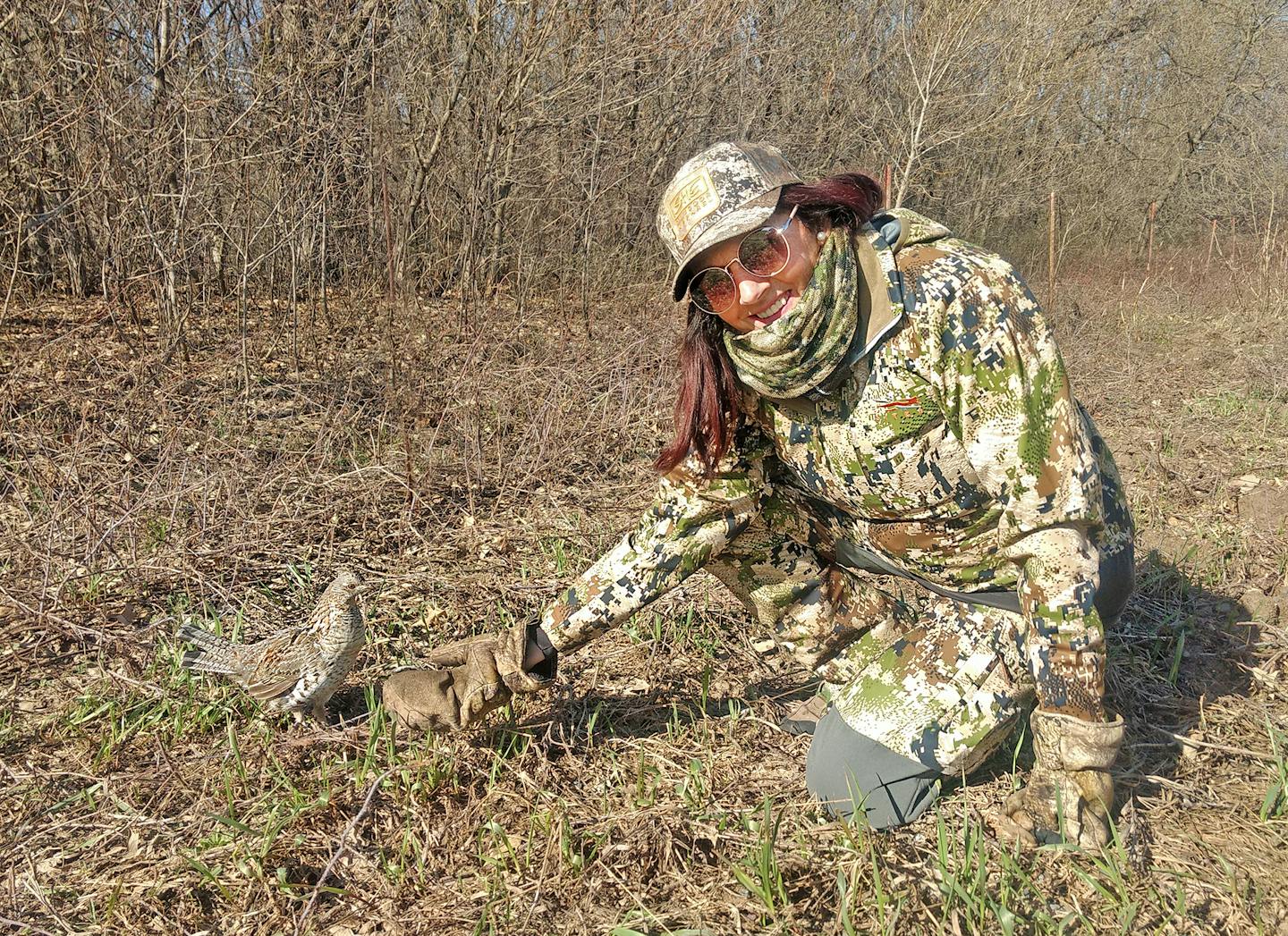BRAINERD, MINN. – Mother Nature can be a mad scientist, prompting, at times, surprises so bizarre they are beyond explanation.
Case in point:
Earlier this spring, a friend, Patti Beasley of Indianapolis, and I were gobbler hunting in central Minnesota when we encountered an unusual ruffed grouse. We spotted the bird in a ditch while cruising backroads scouting for turkeys.
The grouse seemed particularly out of place, because the surrounding habitat — mature bur oaks — was unlike the mixed-age aspen habitat preferred by these forest birds.
Watching the grouse for a few moments, we noticed it appeared unconcerned by my truck. That's not altogether unusual for a grouse, but — and this was unusual — the bird seemed almost intrigued by us, as if he were also checking us out.
Curious, I exited my truck. But the grouse didn't fly away as we expected. Instead, it ran to me and began aggressively pecking my boots.
OK, I figured, a bird with an attitude!
Welcoming a respite from turkey hunting, for the next hour Patti and I interacted with the grouse, which showed no fear of us. On the contrary, in addition to pecking at our boots, he pecked at our hands, all the while uttering the small peeps common to "grouse talk."
Sometimes, it seemed, the grouse's behavior was aggressive, while at other times it seemed as if he were our buddy. This interesting bird needed a name, we figured, and we settled on "Doofus" because of his foolish behavior.
Thus began a relationship that continues today.
***
As a professional wildlife photographer, avid outdoorsman and grouse hunter, I had never previously witnessed such odd behavior, even though I've spent a lifetime in the woods.
I've since learned, however, that while such odd-acting ruffed grouse are very rare, other people have experienced the strange feathered conduct Patti and I encountered.
In 2011, for example, Todd Baker, a friend who owns a deer camp in central Minnesota, told me that a ruffed grouse he named Chuck entertained him and his family for more than three years.
"I think the grouse first became accustomed to me when I'd walk a trail past his drumming log," Todd said. "Eventually the bird hung around the deer shack, tame as can be. We'd bring him blackberries to eat, or we knocked down wild black cherries, which he'd pick off the ground."
Todd said Chuck would roost on the roof of his cabin during winter when the snow was deep enough, diving into the white powder as grouse commonly do in the woods. Todd also noted he had little or no contact with Chuck unless the grouse was near the cabin.
"It seemed Chuck built a trust in us only when in close proximity to the cabin," Todd said.
Sadly, after three years, Chuck met his fate by flying headlong into a window of the cabin.
***
Since Patti and I first met Doofus in early May, I've visited the bird at least a dozen times. Each encounter follows a similar format: I stand in the road ditch and call his name, and within seconds, Doofus appears. Occasionally I bring him raspberries to eat, but I only offer him a few so as not to disrupt his normal feeding routine.
Ironically, I have never heard Doofus, a male, drum. This despite what seems to be his drumming log located about 20 yards into the woods from our meeting spot.
Normally, ruffed-grouse drumming logs show a profusion of droppings, because male grouse spend an inordinate amount of time on or near the logs in spring. But I see only an occasional dropping on the log that I assume Doofus is using.
Is Doofus defending his log and drumming territory, because he considers me a threat? Maybe. Then again, maybe not. What goes on in his head is only a guess on my part.
I have spent enough time with Doofus to know he has three distinct vocalizations. One is a content purr. Another is a more urgent call, like the clucking often heard just before a grouse flushes. When he's aggressive, he utters a third sound similar to a dog whining — a sound similar to the one I've heard when a female grouse with chicks is disturbed.
On most occasions, when I leave, Doofus runs after me and nips at my pant legs. Does he want me to stay? Hard as it is to believe, perhaps especially to me, because while hunting grouse in the fall I am so accustomed to them flushing away from me, Doofus sometimes has actually jumped into my truck and sat on my shoulder.
I disappoint him, perhaps, when I tell him that his home is in the woods and gently usher him to the ground. Then, as I drive away with one eye on the rear-view mirror, I see Doofus hot-footing down the road in pursuit of me and my truck!
Usually, he'll run 50 yards or so before giving up. But lately, as the ruffed grouse breeding season winds down, Doofus seems less ambitious when I depart, which tells me his odd behavior perhaps has something to do with defending his home turf.
Whatever the reason for Doofus' fearless behavior, I feel extremely privileged to be able to socialize with a "wild" ruffed grouse.
The question remains whether Doofus will continue to show himself so readily.
He does seem to enjoy my company, as I do his.
So I hope our friendship continues.






